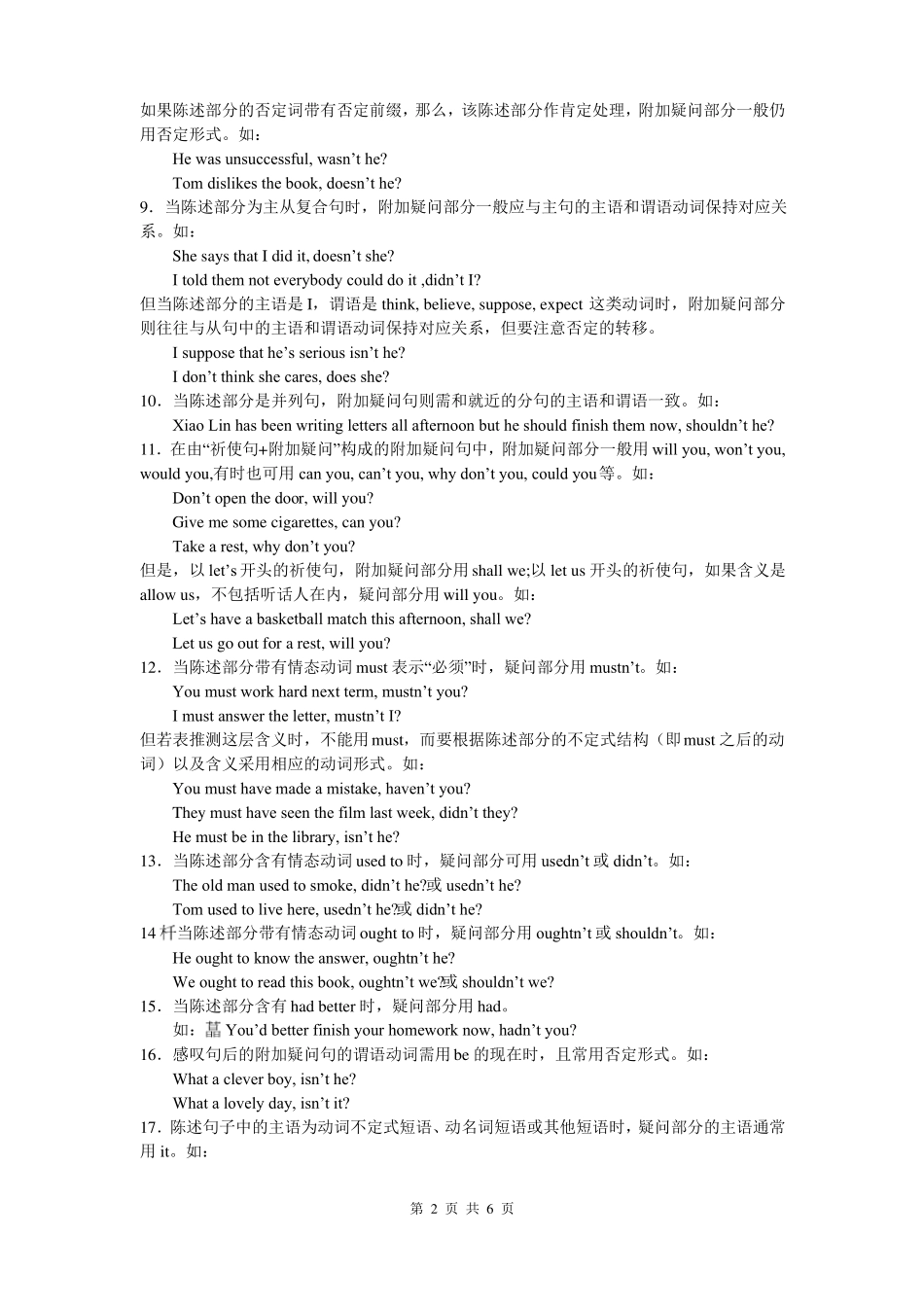反义疑问句即附加疑问句。它表示提问人的看法,没有把握,需要对方证实。它表示提问人的看法,没有把握,需要对方证实。反义疑问句由两部分组成:前一部分是一个陈述句,后一部分是一个简短的疑问句,两部分的人称时态应保持一致。1.陈述部分肯定式+疑问部分否定式2.陈述部分否定式+疑问部分肯定式They work hare, don’t they?She was ill yesterday, wasn’t she?You didn’t go, did you?He can’t ride a bike, can he?请注意以下句型的反义疑问句的用法:1.当陈述部分的主语是 I,而句子又用来征询对方的意见时,附加疑问句中的主语用you。如:I find English very interesting, don’t you?I don’t like that film, do you?2.当陈述部分的主语是everybody, everyone, someone, nobody, no one, somebody等合成代词时,附加疑问句中的主语通常用they。但亦可用 he,尤其是 nobody, no one等作主语,具有否定概念时。如:Somebody phoned while I was out, didn’t they?Nobody wants to go there, does he?3.当陈述部分的主语是不定代词 everything, nothing, anything, something 时,附加 疑问句中的主语一般用 it,不用 they。如:Everything seems all right now, doesn’t it?Nothing is kept in good order, is it?Something must be done to stop pollution, isn’t it?4.当陈述部分的主语是指示代词 this, that 或 these, those 时,附加疑问句中的主语分别用 it和 they。如:This is important, isn’t it?That isn’t correct, is it?These are your friends Tom and Jack, aren’t they?5.如果陈述部分是以代词 one 作主语,附加疑问句中的主语在正式场合用 one,非正式场合用 you,在美国英语中,在非正式场合还可以用 he。如:One can’t be too careful, can one?或 can you?One should do his duty, shouldn’t he?6.如果陈述部分用 I’m…结构,附加疑问部分一般用 aren’t I。如:I am strong and healthy aren’t I。7.当陈述句为 there be 结构时,附加疑问句中的主语也用 there。如:There’s no help for it, is there?There’s something wrong, isn’t there?8.陈述部分带有 seldom, hardly, never, rarely, few, little,nowhere, nothing等否...


